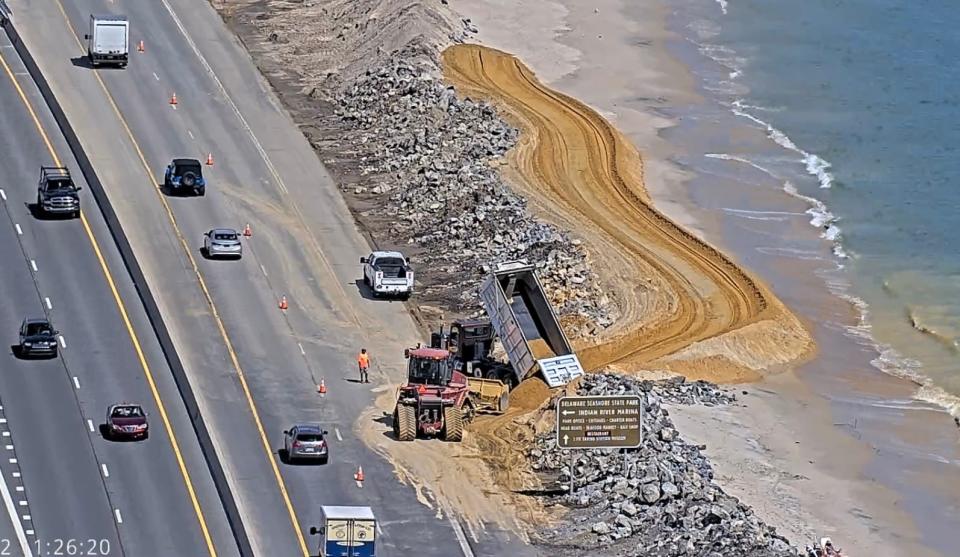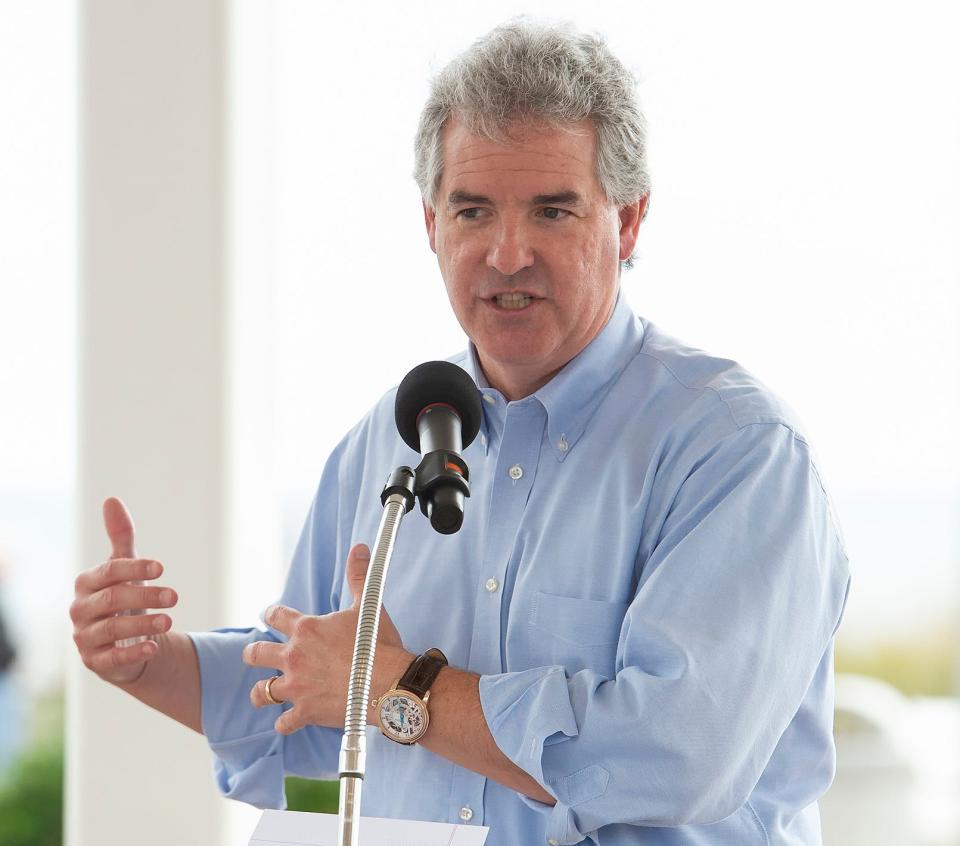The Delaware Department of Natural Resources and Environmental Control shares the public’s sense of urgency for short- and long-term solutions to the environmental and public safety challenges we face at the Indian River Inlet. We are committed to creating safer and more protective measures for public infrastructure and safety. To address the issues on the north side of the inlet, we have been preparing a large-scale dredging project and are working to expedite it as quickly as possible, given our limited resources.
On Aug. 18, after Hurricane Ernesto combined with a full moon and high tide, powerful winds and waves breached the dune and forced the closure of Route 1. It was the second time in six months the dune required emergency repair and fortification. Our Shoreline and Waterway Management Section beach crew worked tirelessly for the next 30 hours alongside Department of Transportation staff to clear the road, raise the dune and fortify it for the first time with large rock called riprap.
The north side inlet’s eroded beach is a threat to infrastructure and public safety along Route 1, especially as storms become more frequent due to climate change. To address the threat, DNREC has been working on a dredge-based beach nourishment initiative modeled after the 2013 U.S. Army Corps of Engineers project, which involved moving half a million cubic yards of sand to rebuild the beach after Hurricane Sandy.

We anticipate this new project will require around 800,000 cubic yards of sand — enough to fill about 245 Olympic-sized swimming pools. While it was originally scheduled for fall 2025, we are now seeking emergency permission to begin sooner due to accelerated erosion and an increase in marine debris washing up after almost every coastal storm.
This critical project is estimated to cost $15 million, but unfortunately, DNREC currently lacks these funds. While we had hopes of obtaining this money from the federal government, that has not been the case so far. Nevertheless, we remain in discussions with the Corps and other partners, including DelDOT and the General Assembly, to secure the necessary financial support.
Meanwhile, DNREC staff have been hard at work, persevering to stave off other breaches as best we can while moving toward a long-term solution. Since 2019, we have transported sand from inland sources to reinforce the most vulnerable areas. In fact, the Department has spent more than $600,000 since October to move sand to the dune, including significant work in March before the first storm disrupted the area later that month.
Our team also planted beach grass to stabilize the dunes and has removed more than one million pounds of debris since June 2023. Additionally, the Indian River Inlet sand bypass plant refurbishment is expected to be complete in December 2024, though I should note the plant was never intended to be the permanent solution on its own.
Unfortunately, the recent storms have caused significant damage, including washing away the beach grass planted earlier this year. In preparation for future storms, we have begun moving sand from stockpiles.
Construction on the beach immediately north of the inlet will continue for several months as DNREC works to strengthen the dune. Work will take place Monday through Thursday from 6 a.m. to 3 p.m. and the north parking lot will remain closed during this time for safety reasons. We ask visitors to respect these work zones.


For years, beach replenishment has been a priority for DNREC. From 2009 to 2023, we conducted 61 projects along the coast, often in partnership with the Army Corps of Engineers. However, the north side beach at the Indian River Inlet is not one that is included in the Army Corps of Engineers’ contracted beach nourishment work for DNREC up to this point, due to an historic cost/benefit analysis the Corps uses.
DNREC remains committed to protecting Delaware’s infrastructure and natural resources and, most importantly, its people. Our employees work very hard and are proud to serve the State and I know they will continue to excel at their important work for public safety and protection of Delaware’s infrastructure – in this case, transportation infrastructure. All they need are the resources to be able to get on top of the job and stay there.
It will take all levels of government working together to address this emergency. Together, we can work to safeguard Delaware’s natural resources and infrastructure for future generations.
Shawn M. Garvin is Cabinet Secretary of the Delaware Department of Natural Resources and Environmental Control.
This article originally appeared on Delaware News Journal: Indian River Inlet Delaware infrastructure protection

